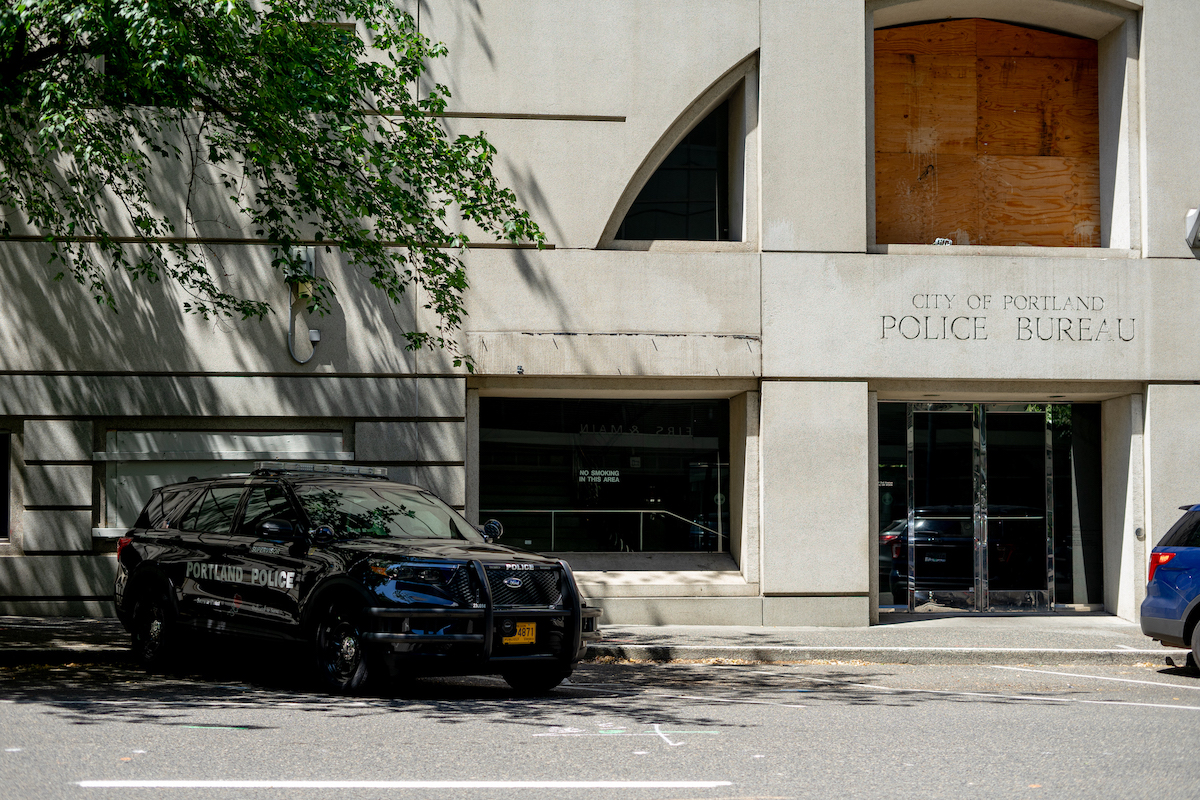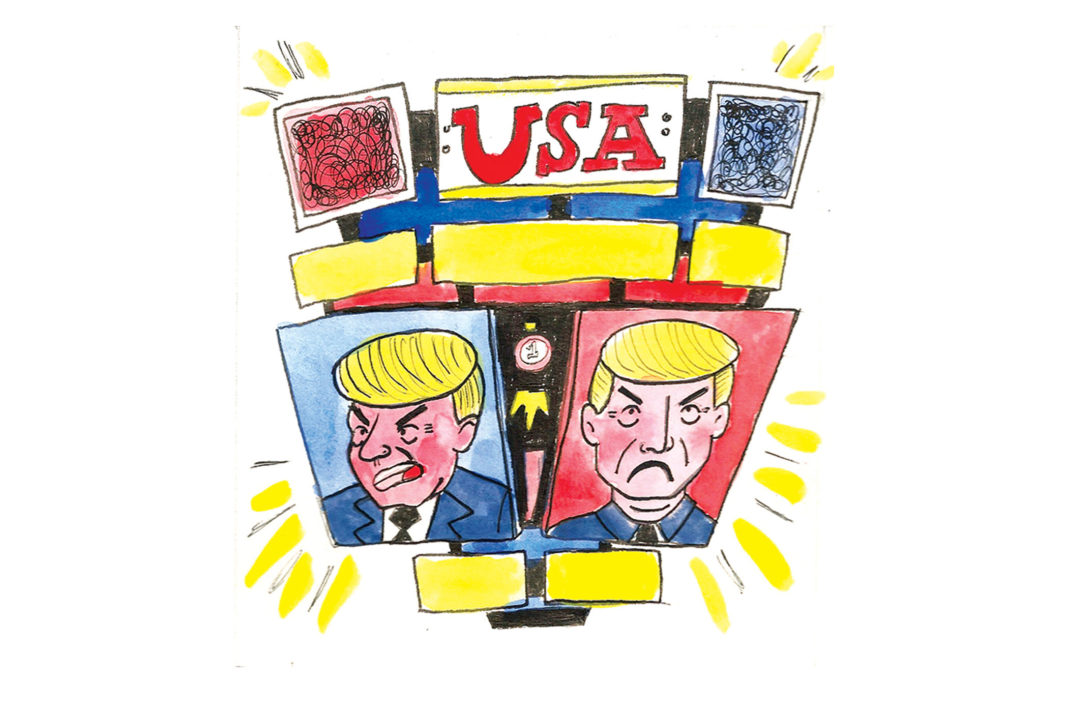If you’ve been watching the news for the last few years, you’ve probably heard about the supposed crime wave sweeping Portland—homicide rates are skyrocketing, businesses are closing and the police are struggling to keep up with Portland’s “ongoing surge in crime,” according to one NewsNation report.
The only problem? That’s not true. Portland’s crime wave is an exaggerated media creation. Per one KPTV report, Portland doesn’t even crack the top 15 list of most dangerous cities in the United States, and it ranks twenty-first in per-capita crime, according to KGW. However, you wouldn’t know that if you’ve been watching the news.
After Coava Coffee Roasters shuttered their downtown location in April, citing “extreme violence and criminal activity on an almost daily basis,” the closure became fodder for countless news sites. KPTV, the New York Post, Blaze Media and Breitbart all took the opportunity to jump on the issue. “Portland coffee shop closes downtown location due to ‘extreme violence’ and ‘crime,’” stated KPTV’s headline.
It is not just Coava, either. Everywhere you look there’s a story about yet another business closing due to the supposed crime epidemic. “REI Blames Costly Crime Wave for Pulling Out of Portland,” stated one Yahoo headline. “Walmart to close remaining Portland stores as crime-ridden city battles shoplifting wave,” according to a New York Post article. Local news station KOIN 6 News started off one 2022 article claiming “continued vandalism in Portland leaves business owners having to pick up the pieces.”
The media frenzy over the supposed crime wave is an extension of the law and order ideology which has guided American politics for the better part of the last century. This was spurred on by national figures like former President Donald Trump exploiting the 2020 protests against police brutality—such as when he tweeted in August 2020, “People of Portland, and other Democrat-run cities, are disgusted.” Or when he simply tweeted “LAW & ORDER!!!” in all caps.
However, those flashy, public pronouncements of law and order politics are only the tip of the iceberg. The more insidious threat comes from media coverage that hammers incessantly on crime, crime, crime until even the most casual reader begins to come around to the narrative.
Look at how major media outlets report on Portland’s crime wave. One article from the LA Times began, “if you want to understand the schism that dominates the political and social landscape in this famously liberal city, a walk down Southeast Rhine Street might be a good place to start.” The headline has an even more explicitly anti-liberal bent. “What’s the matter with Portland? Shootings, theft, and other crime test city’s progressive strain,” stated the article.
That LA Times article is not an opinion piece. It is a news article filed under the paper’s World & Nation section and written by one of their national correspondents. It’s written in the style of a straight news article, too. The prose conforms to AP style and cites interviews from multiple sources, including Portland City Commissioner Mingus Mapps.
It is articles like these that cause the most harm. By sticking to established news standards, media outlets can lend themselves a sense of objectivity, even when laundering reactionary political opinions. “Long hailed as a model of conscientious urban planning and civic engagement, Portland is facing a crisis of confidence,” stated the article. “A backlash [to progressive policies] is underway.”
The message here is that Portland—riddled with crime—is due to the folly of progressive reformers, but the LA Times isn’t officially saying that. Instead, they slip those politics into their news section, where the sheen of journalistic objectivity gives that narrative a sense of legitimacy that it would not have if it were simply run through an op-ed column.
In his book Manufacturing Consent, linguist and social critic Noam Chomsky described how media organizations run propaganda campaigns to steer political discourse. “Propaganda campaigns, in general, have been closely attuned to elite interests,” Chomsky stated, even though media outlets run with stories that are useful to their bottom line.
That’s clear to see in how other mainstream outlets report on Portland.
For example, look at how KGW reports on Portland police. “Portland among major cities losing police officers, which is affecting residents,” stated the headline of one AP wire story. The subhead continued, “Pandemic burnout, budget cuts, and anti-police protests have reduced police ranks in major American cities, including Portland.”
It’s hard not to read this as blatant pro-police propaganda, as it all but says that Portland’s supposed spike in killings results from disillusioned police officers overrun by anti-police protesters and misguided progressives.
Willamette Week tackled this issue in a July 2022 article. “Violent crime is the story of Portland’s summer,” the article stated. “However, are progressive reforms and activist politicians to blame for the latest crime wave?” Citing a report from the Brennan Center, the article stated that there “just isn’t enough evidence to establish a link between increased violence and progressive policies” and pointed out that the evidence suggested “broad national causes driving crime” across the country.
The next time you read a story about crime in Portland, take a second to ask yourself who benefits from that story. Why are you hearing that particular narrative? The media’s focus on crime in Portland is designed to push a reactionary law and order narrative and crack down on progressive political action. It is our job as media consumers to keep an eye out for when news organizations try to manufacture consent for pro-police policies.






